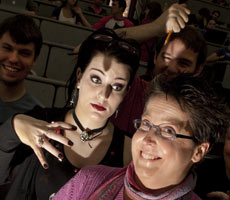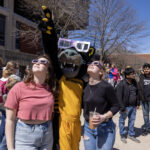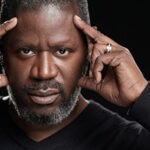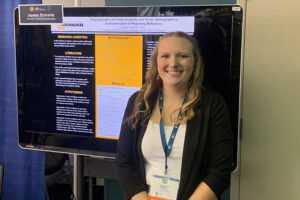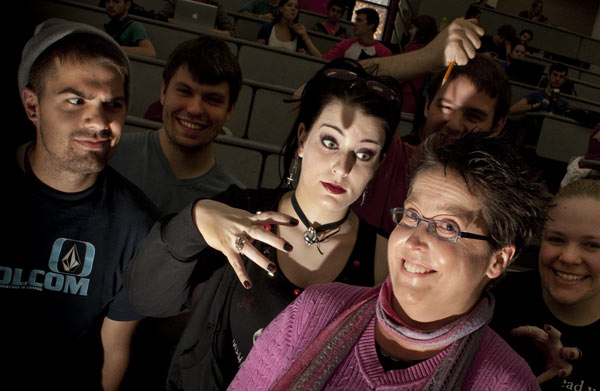
Interest in vampires never dies.
That’s why students have flocked to a UWM class titled “Vampires: From Slavic Village to Hollywood.”
The class was offered in spring 2012 and proved so popular that two sessions – one in-person and one online – are being offered this fall.
Students in the class come from a variety of majors, says Meghan Murphy-Lee, a senior lecturer in Slavic languages, who teaches the class. The three-credit course focuses on vampire myths in the Slavic/Balkan areas rather than Romania.
“Writers and film majors are attracted to the class as a way of grounding themselves in vampire myth and folklore,” says Murphy-Lee, but the class also attracts students from business, education, history, anthropology, Russian, Slavic studies, criminal justice and other areas.
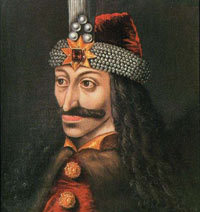
The popularity of the Twilight books and films, Anne Rice novels, the True Blood series and other vampire-themed creative works fuels current interest, but Murphy-Lee notes that “vampires are a long-standing popular staple in film and literature.”
The course offers a historical survey of Western vampire lore, from discovery in Eastern Europe in the 1700s through British literary vampire literature to Hollywood Dracula films. While Hollywood has focused on the themes of sex and violence inherent in the tales of blood-sucking vampires, the myths and legends are linked to religion and customs, according to Murphy-Lee.
Romania is often identified with vampire myths, but researchers have traced variations of the stories to villages in Russia, the Ukraine, Croatia and Serbia, says Murphy-Lee. Her doctorate is in Slavic Languages and Literature, and her research interests include Slavic folklore, linguistics and strategies for improving Russian-language acquisition.
Looking at folklore roots
The College of Letters and Science had offered a vampire class earlier that focused on literature, but Murphy-Lee’s class looks more at the folklore roots of vampire legends and how context shapes the stories from various cultures. For example, different legends offer myriad ways of rendering a vampire harmless – ranging from garlic to protective herbs to candles to a stake through the heart, she says.
The variety of backgrounds students bring to the class contributes to lively discussions, says Murphy-Lee.
“You really get a great insight into the development of Slavic culture and how body and spirit work together in Slavic mythology,” said Katie Kniesly, an education major who took the course in the spring. Her interest in vampires grew out of Bram Stoker’s classic Dracula story, and she was interested in exploring the history of vampire legends.
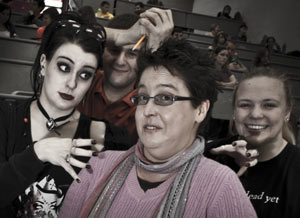
“Vampires are such a prevalent theme in literature,” said Cyanne Gore, Letters and Science major, who also was in the spring class. Gore is interested in creative writing and film, and wanted to look at the roots of the stories. Gore also was attracted to the mythical nature of vampires. “They have such an aura of mystery and power.”
“You become a lot more critical of vampire films,” adds Mike Ade, a criminal justice major, who took the course as part of an interest in vampires and folklore that grew out of reading Anne Rice’s vampire novels.
Daniel Roessler, a senior who’s taking the course online this semester, is majoring in biology and plans to go into veterinary medicine. “I needed one more class to meet my humanities requirement, plus I love classic movie monsters/villains, so I was very happy this vampire class was available.”
While he probably won’t directly use what he learns, he says he finds it interesting to discover how the Slavs worshipped spirits and gods. “I’m always a fan of mythology.”
Murphy-Lee sees the course as a way of enticing students into Russian language and Slavic studies classes. “Once students start learning about the Slavic culture, they often become interested in the languages, too. It’s really a window into the Slavic world, a way of understanding the Slavic peoples and culture.”
